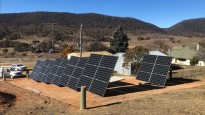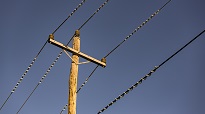During times of pressure on our network there may be opportunities for you to reduce your demand in exchange for payment or reductions in your electricity bills. You may also be asked to reduce your demand in a Lack of Reserve event when the National Electricity Market faces challenges.
For stakeholder involvement in our demand management activities, visit our engagement opportunities page.
Our industry engagement obligations and the development of a new Industry Engagement Strategy are underway and will be added to this page.
Consumption vs demand
Consumption is the total amount of electrical energy used over a fixed amount of time, measured in kilowatt-hours (kWh). Demand is the electrical power used at any one time and is measured in kilowatts (kW).
You will notice your appliances may have a star rating which refers to the energy it uses, as well as a power rating somewhere near the wall plug. The power rating is the demand your appliances place on the network when operational.
Spreading your appliance use throughout the day can ease demand on the network without altering your overall energy consumption. Our demand management initiatives allow us to work with you to reduce power demand when the network is under a lot of pressure.
Demand management initiatives
- Alternate supply to large customers: we work with larger customers such as the Canberra Institute of Technology and pay them to reduce their electricity use when needed, or ask they use one of their alternative supplies such as generators or batteries.
- Virtual Power Plants (VPP): leveraging solar-powered batteries installed across the ACT, we can draw excess energy from these units back into the grid during peak demands.
Benefits of managing your demand
Managing demand looks after our network and can also provide the following benefits:
- Sustainable network costs – reduced peak demand can potentially defer network upgrades and keep network costs down.
- Increased reliability of service – by switching off non-critical loads upon request, we can ensure continuous power to essential services.
- Compensation for participation – active participants in our demand management programs may be eligible for payments.
Appliances which use the most demand
Common appliances which can contribute to reducing your demand include:
- Lighting
- Air conditioners
- Heaters and ventilations systems
- Chillers plants
- Hot water systems
- Steam generators and boilers
- Air compressors
- Pumps
- Manufacturing process equipment
- Industrial freezers
- Conveyors
- Running standby generators
Get involved
For large customers: Reach out to our demand management team at demandmanagement@evoenergy.com.au to discuss how you can help.
For industry experts: If you have insights on addressing future network constraints, join our Register of Interested Parties.
Demand management documents
Demand Management Strategy
Demand side engagement strategy
Worked Example Business Precinct
Avoided TUOS methodology 2022-23



